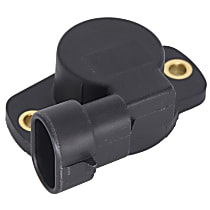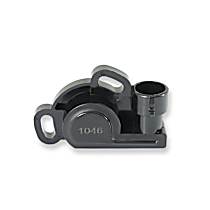{
"lazyNodes": false,
"abFitnotesFlag": false,
"abCrawlReviews": false,
"productOptionsCookie": false,
"orderDelayFlag": false,
"skipSessionCookie": false,
"covidMessage": false,
"fullTitleCookie": false,
"nrLoggerCookie": false,
"checkoutReviewCookie": false,
"productOptionSeqCookie": false,
"maintenanceFlag": false,
"bufferETACookie": false,
"multiShippingDiscountFlag": false,
"newFitmentFlag": false,
"surveyOptInFlag": false,
"crossSellFlag": false,
"skuMappingFlag": false,
"paySplitCookie": false,
"callDisableFlag": false,
"zipPaymentFlag": "u",
"hassleFreeReturn": false,
"lifetimeReplacement": false,
"cpn_off": false
}Volvo V40 Throttle Position Sensors
Shop Catalog
![]() WARNING: This product can expose you to chemical which is known to the State of California to cause cancer and birth defects or other reproductive harm. For more information go to www.P65Warnings.ca.gov.
WARNING: This product can expose you to chemical which is known to the State of California to cause cancer and birth defects or other reproductive harm. For more information go to www.P65Warnings.ca.gov.
![]() WARNING: This product can expose you to chemicals including Lead, which is known to the State of California to cause cancer and birth defects or other reproductive harm. For more information go to www.P65Warnings.ca.gov.
WARNING: This product can expose you to chemicals including Lead, which is known to the State of California to cause cancer and birth defects or other reproductive harm. For more information go to www.P65Warnings.ca.gov.
![]() WARNING: This product can expose you to chemicals including Lead, which is known to the State of California to cause cancer and birth defects or other reproductive harm. For more information go to www.P65Warnings.ca.gov.
WARNING: This product can expose you to chemicals including Lead, which is known to the State of California to cause cancer and birth defects or other reproductive harm. For more information go to www.P65Warnings.ca.gov.
![]() WARNING: This product can expose you to chemical which is known to the State of California to cause cancer and birth defects or other reproductive harm. For more information go to www.P65Warnings.ca.gov.
WARNING: This product can expose you to chemical which is known to the State of California to cause cancer and birth defects or other reproductive harm. For more information go to www.P65Warnings.ca.gov.
![]() WARNING: This product can expose you to chemical which is known to the State of California to cause cancer and birth defects or other reproductive harm. For more information go to www.P65Warnings.ca.gov.
WARNING: This product can expose you to chemical which is known to the State of California to cause cancer and birth defects or other reproductive harm. For more information go to www.P65Warnings.ca.gov.
![]() WARNING: This product can expose you to chemical which is known to the State of California to cause cancer and birth defects or other reproductive harm. For more information go to www.P65Warnings.ca.gov.
WARNING: This product can expose you to chemical which is known to the State of California to cause cancer and birth defects or other reproductive harm. For more information go to www.P65Warnings.ca.gov.
![]() WARNING: This product can expose you to chemical which is known to the State of California to cause cancer and birth defects or other reproductive harm. For more information go to www.P65Warnings.ca.gov.
WARNING: This product can expose you to chemical which is known to the State of California to cause cancer and birth defects or other reproductive harm. For more information go to www.P65Warnings.ca.gov.
![]() WARNING: This product can expose you to chemical which is known to the State of California to cause cancer and birth defects or other reproductive harm. For more information go to www.P65Warnings.ca.gov.
WARNING: This product can expose you to chemical which is known to the State of California to cause cancer and birth defects or other reproductive harm. For more information go to www.P65Warnings.ca.gov.
![]() WARNING: This product can expose you to chemical which is known to the State of California to cause cancer and birth defects or other reproductive harm. For more information go to www.P65Warnings.ca.gov.
WARNING: This product can expose you to chemical which is known to the State of California to cause cancer and birth defects or other reproductive harm. For more information go to www.P65Warnings.ca.gov.
![]() WARNING: This product can expose you to chemical which is known to the State of California to cause cancer and birth defects or other reproductive harm. For more information go to www.P65Warnings.ca.gov.
WARNING: This product can expose you to chemical which is known to the State of California to cause cancer and birth defects or other reproductive harm. For more information go to www.P65Warnings.ca.gov.
Popular Products
Customer Guides
Common Gripes and Quick Fixes with the Volvo V40 Throttle Position Sensor
The throttle position sensor is essential on just about any car. Even a classy family vehicle like the Volvo V40 requires this component to function properly. You see, it detects the position of the butterfly valve within your throttle in order to give the proper instructions to the mechanism that controls the valve. When you press down on the accelerator pedal, for example, the throttle position sensor first determines the state of the valve before it sends a signal that adjusts the valve accordingly. It even functions when the engine is idling-allowing for just enough of an opening on the valve to make sure the engine stays alive. There are a few things you can check to determine if you are having problems with your sensor.
"Check engine light" comes on
Granted, it's easy to confuse the check engine light warning with many different problems that can warrant the light coming on. The clue is actually something rather simple-and a bit funny: if the warning light comes on but your engine is still more or less fine, then there's a chance that your throttle position sensor is the one that's acting up. That means your engine is a-okay, and it's actually the sensor guiding it that is on the fritz.
Rough, near-stalling idling
Another symptom of trouble with your throttle position sensor is when you're on idle and the engine feels really rough-as though it wants to stall on you. The good news in this case is that the far more expensive engine isn't the one on the fritz-just the cheaper sensor. The reason that it causes all that roughing about is because the sensor-unable to tell what's what-keeps the butterfly valve in a position that isn't conducive to idling.
What to do?
The best thing you can do to deal with the problem temporarily is to easy up on the accelerator so you can make it to a mechanic. You could, hypothetically, do a repair on the module, but with sensitive calibrations involved, you're really better off replacing it.
Imagine if you had to do everything and be conscious every single moment of the time you drive around in your Volvo V40. Imagine that you had to press on something to keep your ride going even when you are at a complete stop. Driving won't be such a convenient thing, now would it? A throttle position sensor is one of those things that allow you to leave the more mundane task of keeping your engine running even when on idle. More than that, however, it also manages the butterfly valve that regulates the amount of air coming into the engine-so when you floor the accelerator, you get exactly what you want! For those reasons, it's important to care for your throttle position sensor to keep it working for a long, long time.
Engage it regularly.
Some people are afraid to even regularly use things because they're afraid that it will wear the parts down. The same is true for vehicles. A lot of people treat their rides with kid gloves to make sure it "lasts longer". The opposite is true, however. You should actually regularly engage your car's components-like the throttle position sensor here to keep it from "locking up" or wearing out faster. For the sensor, it's simple: just make sure you drive your car around the bend at least once a week-assuming you don't use it regularly. This keeps it constantly engaged, and on its toes.
Clean it indirectly.
While it's a smart move to always keep your car's components clean, splashing water on the sensor isn't really a good idea. Not that you can even really reach the sensor. So how do you keep it clean? Go for an engine wash! Yup, there are people out there who are specifically trained to wash up your engine without getting the most important parts totally soaked up in harmful water. You could, of course, learn to do it for yourself, but why risk a costly engine repair or replacement for a few measly dollars?



















